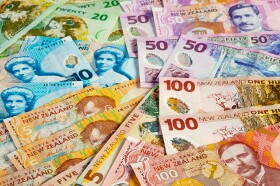The New Zealand dollar closed higher versus its US counterpart as nation’s trade balance posted an unexpected surplus last month. The currency closed lower against the euro and the Japanese yen.
New Zealand’s trade balance posted a surplus of NZ$338 million in December after showing a deficit of NZ$307 million. Forecasters promised a deficit of NZ$74 million. The surplus was a result of rising exports and falling imports. Milk powder, butter, and cheese were the main contributors to the advance of exports.
The Reserve Bank of New Zealand left its main interest rate unchanged at 2.5 percent on January 25. Reserve Bank Governor Alan Bollard said in the statement after the decision that prices for nation’s exports increased, but profits of exporters were limited by the appreciating currency, while the European crisis continued to have a negative impact. Regarding domestic fundamentals, Bollard said:
In the domestic economy we continue to see modest growth. Over recent months there have been signs of a limited recovery in household spending and the housing market. Further ahead, repairs and reconstruction in Canterbury will also provide a significant boost for an extended period, though there may be further delays resulting from the aftershocks.
Inflation wasn’t pressing to raise lending rates, either, as it fell and stabilized below 2 percent.
NZD/USD was up from 0.8215 to close at 0.8244, while earlier it touched 0.8248 — the highest level since September 20. Meanwhile, EUR/NZD as up from 1.5938 to 1.6017 and NZD/JPY was lower from 63.59 to 63.20.
If you have any questions, comments or opinions regarding the New Zealand Dollar,
feel free to post them using the commentary form below.
